How would you feel about firing up the grill? Going out for ice cream? Eating some juicy watermelon? These are a few of the things at the top of my summer “to-do” list, but now that it’s fall my tastes are changing. I don’t know about you, but my body tends to crave different foods with different seasons. Advertising can play a role in what our tastebuds want (I know a lot of people who go crazy over Starbucks’ pumpkin flavored coffees and pastries), but it’s also likely that our bodies crave foods that are in season. After all, fresh food is more nutritious than canned or processed options. It’s no surprise, then, that as the weather grows cooler, our bodies tend to turn to fall fruits and fall vegetables. Luckily there are plenty of healthy eating options to satisfy your appetite so even if you do wish to partake in some apple cider donuts or a pumpkin scone you can easily balance out your food choices.
Apples. One of the most well-known fall fruits, look for firm, brightly colored apples that are free of bruises. The skin should be clean and shiny; a dull finish indicates the fruit may be past its prime. You can refrigerate apples up to two weeks; it’s not recommended to store them at room temperature, as they ripen quickly and become mealy. Many people enjoy apples raw or baked into pies, but they are also good roasted, sautéed, or added into savory dishes.
Broccoli. Broccoli should have firm, tight dark green florets with slightly lighter stalks. If it is yellowing, it is too old and will have an overly strong taste; if the stalk is whitish, it will be woody and tough. Broccoli can be refrigerated in a plastic bag for up to five days. Separate the head into florets to encourage even cooking. You may peel and slice the stems and cook them along with the florets. Try it raw with assorted other crudités, roasted, sautéed, steamed, or blanched.
Brussels sprouts. Choose firm, small compact heads that are bright green and free of blemishes. Brussels sprouts that that feel puffy or light for their size should be avoided. Refrigerate them in a plastic bag for up to five days. Like broccoli, they may be enjoyed roasted, sautéed, steamed or blanched.
Butternut squash. Squash should be solid and heavy for its size with matte skin (if it’s shiny, the squash probably wasn’t ripe when it was picked). Store your squash in a cool, dry place (not in the refrigerator) up to a month. If you don’t want to use the entire squash, you may wrap a cut, uncooked piece in plastic and refrigerate it up to two days. To prepare squash for cooking, you can use a vegetable peeler to remove the skin, halve it lengthwise with a serrated knife, scoop out the seeds, and proceed to cut it as desired. Like most winter squashes, you can sautée, mash, boil, or—for a sweet and tender flavor—bake it in the oven.
Cabbage. Choose cabbage with tight, firm, heavy heads without broken or bruised leaves. This fall vegetable can keep for up to a week or more in the refrigerator. You can help it retain moisture by leaving the outer leaves attached during storage. Wash, quarter and core cabbages when you’re ready to use them.
Cauliflower. Florets should be compact, creamy white, and sport bright green leaves. Yellowish tinges and tiny black mold spots mean it is too old. Refrigerate cauliflower in a plastic bag up to five days. Before cooking, remove the core and separate into florets. Cauliflower may be eaten blanched, steamed, roasted, or raw.
Cranberries. You might associate this fall fruit with Thanksgiving, and indeed cranberries are excellent for flavoring a sauce, adding to stuffing, or using in breads and cakes. Choose shiny berries that aren’t shriveled. Brown or deep red colors indicate freshness. Good, fresh berries should be hard and bounce if dropped on a hard surface. They will keep for up to 2 weeks in the refrigerator and should be sorted and rinsed in cold water before using.
Grapes. Choose plump, unblemished grapes that are firmly attached to a flexible stem. Ripe white and green grapes should have a yellowish cast; red and purple ones should have no green. Refrigerate them in a ventilated plastic bag up to one week (at room temperature they shrivel and start to ferment). Wash thoroughly just before serving.
Mushrooms. Fresh mushrooms should be firm and evenly colored with smooth, dry (not dried) skin. Caps should be closed tightly around the stems. Remove mushrooms from any plastic wrap or packaging and refrigerate them in a paper bag up to three days. Wipe mushrooms with a damp paper towel just before using.
Parsnips. They look like white carrots, but have a stronger, nuttier flavor. Choose thinner parsnips, as fatter ones tend to have a thick, woody core you need to cut out. They may be eaten raw or cooked. Parsnips should be eaten or stored within a couple days of purchasing. Store them in the refrigerator.
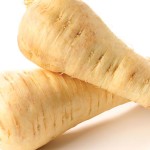
Pears. Pears ripen off the tree, so most of the fruit you’ll find at the market will need a few days to soften at home. Allow this fall fruit to ripen at room temperature. When ready to eat, the flesh on the neck of the fruit will give a little when pressed. Ripe pears may be refrigerated up to five days.
Potatoes. Choose firm, smooth potatoes with few eyes. Potatoes with green patches (a sign of prolonged exposure to light) should be avoided. The discolored spots taste bitter and are toxic if eaten in large quantities. Remove potatoes from any plastic packaging before storing them in a well-ventilated, cool, dark place for up to two weeks. Peeled potatoes turn brown when exposed to air, so prepare them just before use.
Pumpkin. I know it’s fall when I start craving pumpkin. Over the weekend, I had the biggest craving for pumpkin bread (although I always switch out the cranberries for chocolate chips). Tuesday morning, I added pumpkin puree, cinnamon, and pie spice to my coffee because I still hadn’t had enough. When it comes to fresh pumpkins, choose those that feel heavy for their size. The skin should be thick and hard without blemishes. They can keep for one month in a cool, dry place or up to three months in the refrigerator. Roast them until tender and use in pies, soups, and risotto. The seeds may be sprinkled with salt or other spices, roasted, and then eaten. Personally, I find canned pumpkin puree (not pie filling) to be the most convenient. I try to keep a stock of it on hand during the fall season.
Spinach. This fall vegetable should have firm, fresh, crisp and deep green leaves. Avoid spinach with blemishes, insect damage, or wilting leaves. Spinach will keep for 1 or 2 days if refrigerated. Remove large and tough central ribs and wash well (this may require several changes of water) to remove sand. Eat raw or cooked.
Sweet potatoes. Choose small to medium sweet potatoes (large ones can be tough). Skins should be smooth and evenly colored. Remove them from any plastic packaging before storing them in a well-ventilated, cool, dark place up to two weeks.
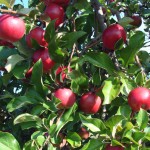
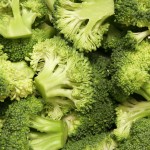
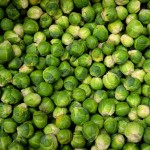
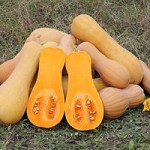
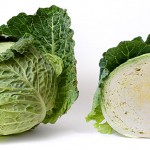
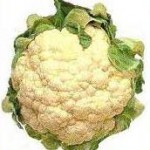
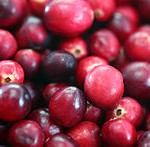
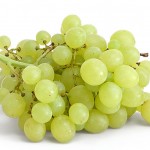
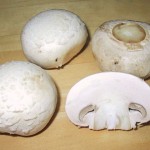
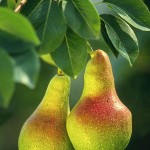
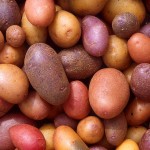

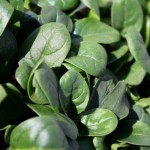
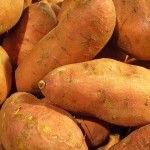
Great list! I love fall fruits and vegetable!
Mmmm……now I'm hungry. I love fall veggies and get cases of apples to can too.
I do too! I love going to pick apples and cook with pumpkin! I must confess, I am also one of those people who run to get pumpkin coffee!
wow! thanks susan for this great info… i will bookmark it to re-read it later, just woke up 😀
Yum! The fall produce is some of my favorites! 🙂
I love the fall for a lot of reasons but this is one of them!!! Very nice write up!
Love this! Just pinned!
great list..with Pumpkin being one of my favorites!
I love sweet potatos and pumpkin. I eat them all the time. Thanks for posting I have never had a parsnip…I will put it on the list of things to try.
I love all the fall produce! And the pumpkin spice coffee…and apple picking…and Halloween…and my kids' birthdays….
Can you tell it's my favorite time of year? 😉
Great list! These will help a lot in our family. My son is allergic to rice, soy, and milk so fruits and vegies are always on the menu 🙂
Thanks for the awesome list! So many yummy fruits and veggies in the Fall!
Fantastic list! Some of these are actually in my refrigerator right now to be made into baby food!
I love all that fall has to offer, especially apples and pumpkins!
This is a really good list especially for Thanksgiving coming up. You can make so many different dishes with all of these. I love cranberry especially with turkey 🙂 yum
Such a great article. I will also add it to my bookmark for future reference 🙂
Great article about veges. thanks for all the info.
I absolutely love fall and especially love falls foods 🙂 Great list and tips thanks!
What a beautiful and well written post!
Fall fruits and veggies are my favorites 🙂 Great list
I have a hard time taking this in all at once so I came back to read it again. It's a lot to remember at once.
Thanks for sharing the list of fall fruits and veggies. I love to roast different fall or winter veggies with just olive oil and salt in it 🙂
Sweet Potatoes (baked with marshmallows, & brown sugar & cinnamon) along with cauliflower are 2 of my favorite foods!!
Fall fruits & veggies are my favorite!! What a great list 🙂
Looks like you got everything set up for halloween, im sure everybody will enjoy the fruits and vegetables. I like the apple and grapes
That sounds great! I absolutely LOVE pumpkin EVERYTHING! 🙂
These are some awesome ideas on what to serve this season. Sometimes in the winter is hard to know what is good to serve. Thank you